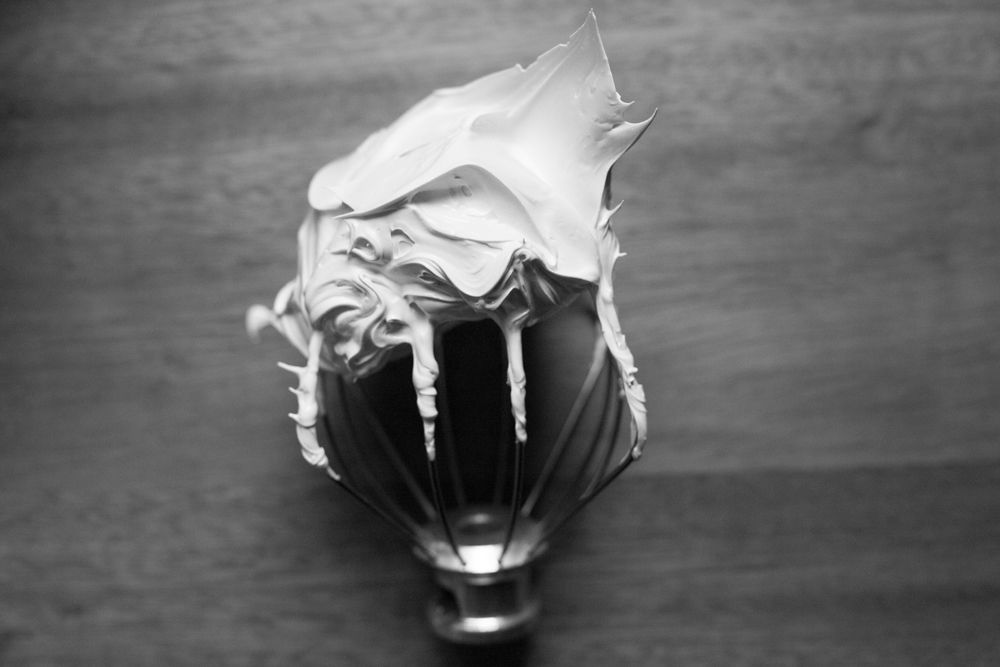
This is the second part of my
Foundations post on making meringue.
Last week I covered the basics of meringue and the French method. The same basic tips apply to Swiss and Italian meringue, which is what we're covering today. Though they might seem a bit scarier, both techniques are useful to have under your belt.
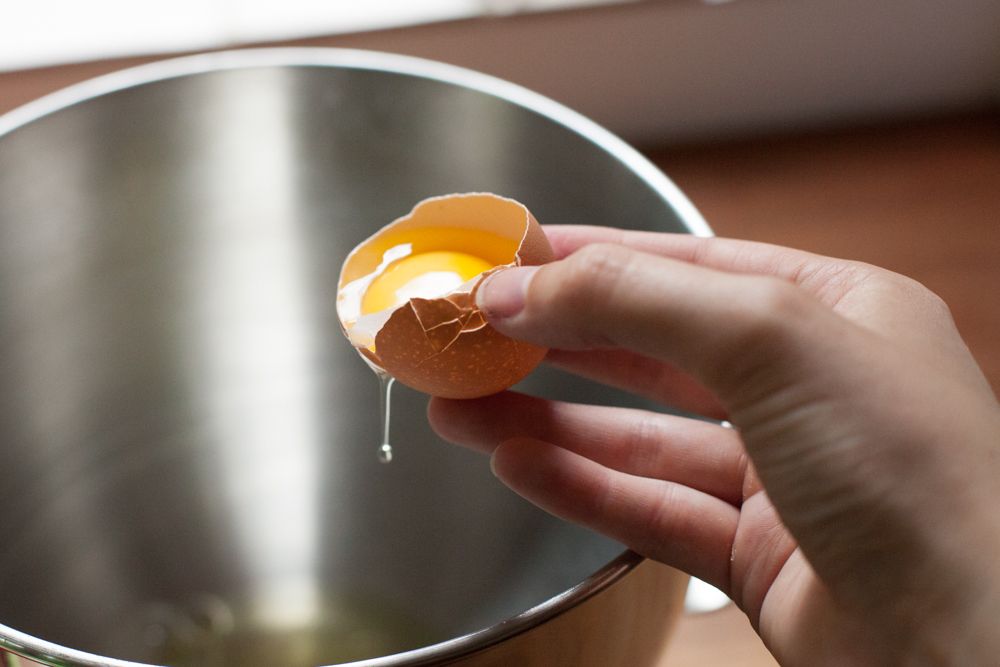

Swiss meringue is made by combining the whites and sugar then heating them over a pan of simmering water - a bain marie - then taking them off the heat and whipping until cool. Along with Italian, it's called a cooked meringue.
One of my favourite things about Swiss meringue is that you can make it with a combination of soft brown sugar and caster sugar. I first discovered this a few years ago when I made the
Brown Sugar, Hazelnut and Cinnamon Meringues from
Ottolenghi's first book. The recipe uses 35% brown sugar and 65% white caster sugar, which gives a gorgeous caramel flavour.
The ratio for Swiss is variable - I tend to use something around 1 : 1.5 (whites : sugar). In the photos I used 82g egg white (from 2 large eggs), 80g white caster sugar and 45g light brown sugar. That's a 1 : 1.5 ratio with the 35/65 brown/white split (I calculated 82 x 1.5 = 123, then 123 x 0.65 = 80, so 123 - 80 = 43, which I rounded up to 45).
You can use an electric thermometer or a normal one. I have my grandmother's thermometer but I tend to use the electric one as the probe is faster to clean.
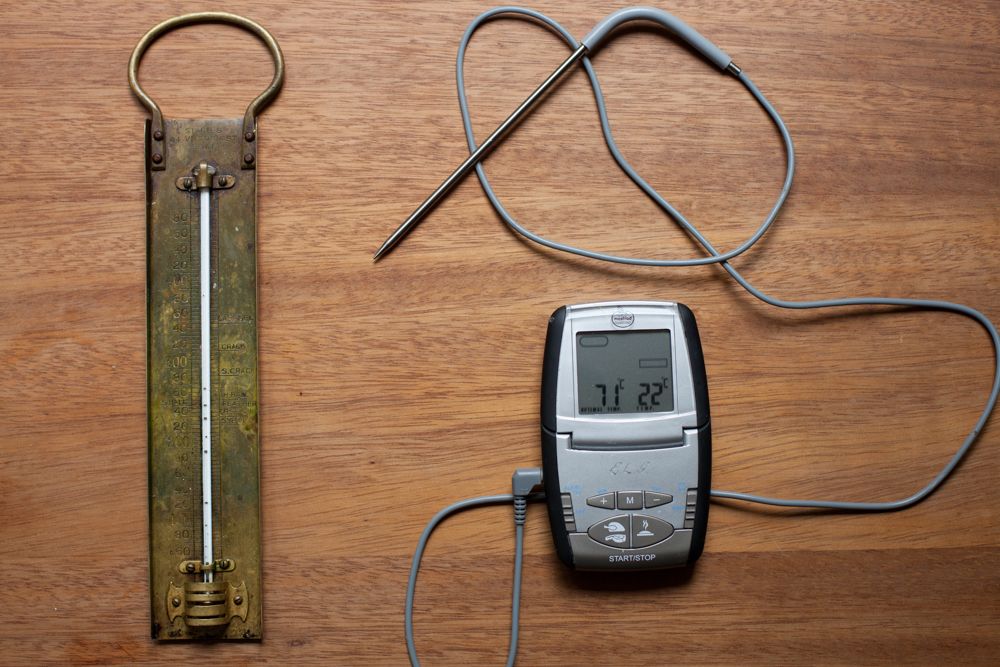
The temperature that the whites are heated to varies greatly by recipe. The Ottolenghi recipe takes them to 40C, Cordon Bleu took them to 50C,
David Lebovitz takes them to 60C,
Whisk Kid and
Bakers Royale/Alice Medrich heat them to 70C and
McGee says they can be taken up to 75-78C.
So what temperature should you use?
One of the main reasons for taking them up to 70C/160F is that you kill any salmonella present and pasteurize the egg whites. My habit of licking the cake bowl lead to me getting salmonellosis when I was 18 months old - I don't remember it but apparently it wasn't pleasant, so I understand why you might want to be careful.
I haven't noticed any difference in the final product so it depends on how much you're worried about raw egg. Salmonella is pretty rare and personally I'll eat mousse or other things with raw eggs. The only thing you must do is heat it enough that the sugar dissolves fully into the whites (this usually happens at about 40C) - otherwise it's up to you. If you're just checking the sugar, you don't even need a thermometer - you can just rub a bit of the mixture between your fingers.
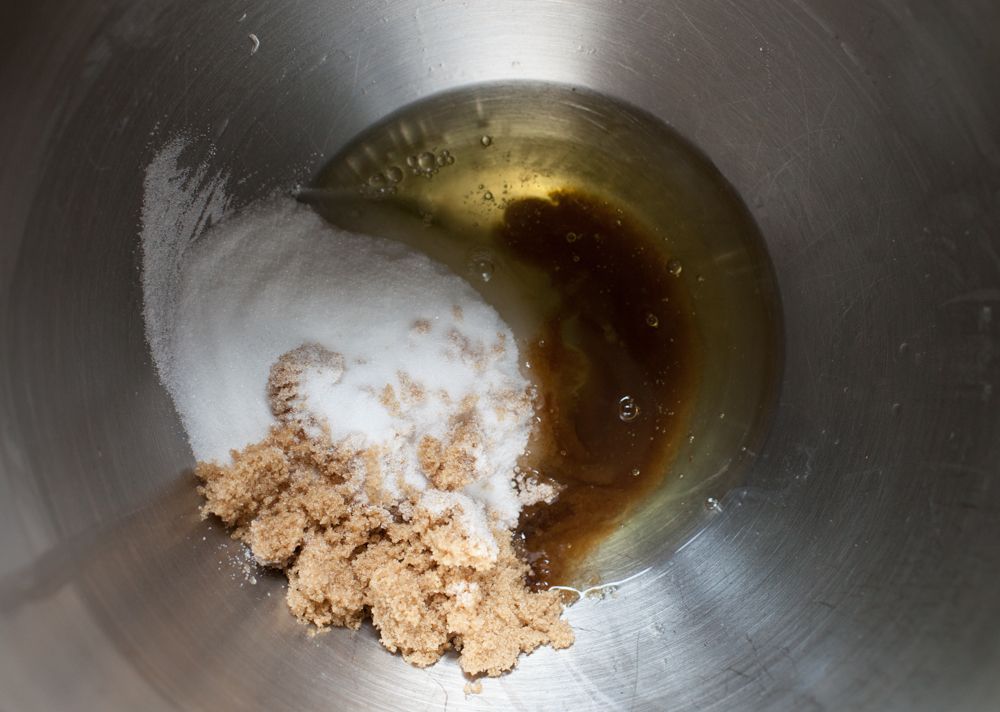
To start, wipe the bowl of a stand mixer (or a normal bowl, if using an electric hand whisk) down with a lemon to get rid of any grease and add a touch of acid (this step is optional, but I always do it). Briefly whisk the egg whites and sugar together to combine them.
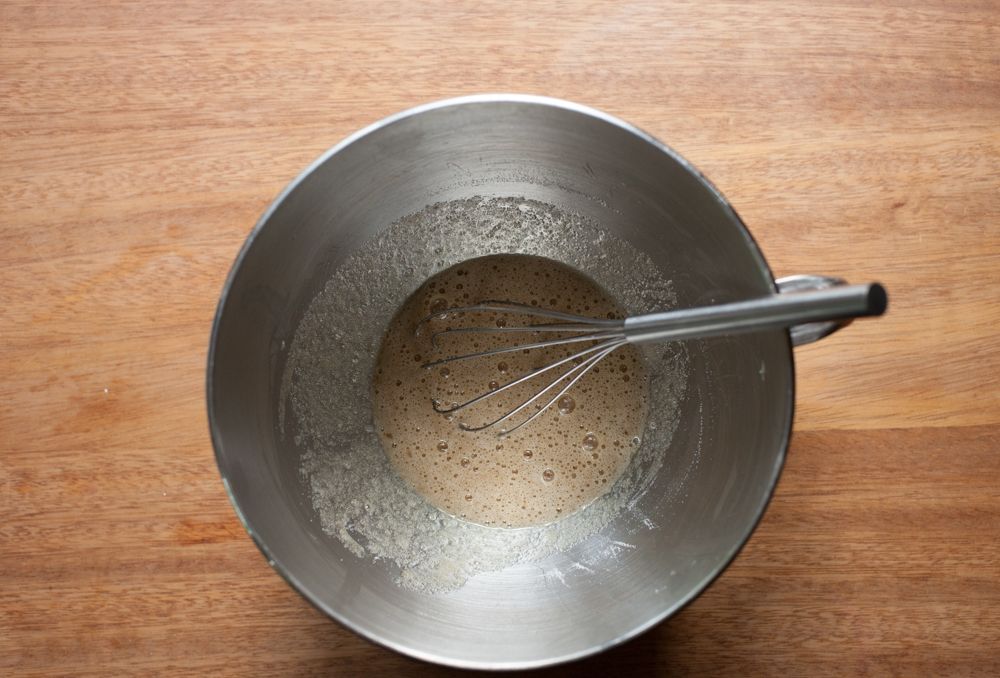
Place the bowl over a pot of simmering water and add the thermometer. Stir every now and then (I stir with my thermometer probe). After about 3 minutes, when it's about 40C/105F, it should feel smooth with no gritty bits if you rub a bit of the mixture between your fingers. Either use it now or keep heating until it reaches your desired temperature. It took me 7 minutes in total to get to 70C/160F when I made the batch in the pictures.
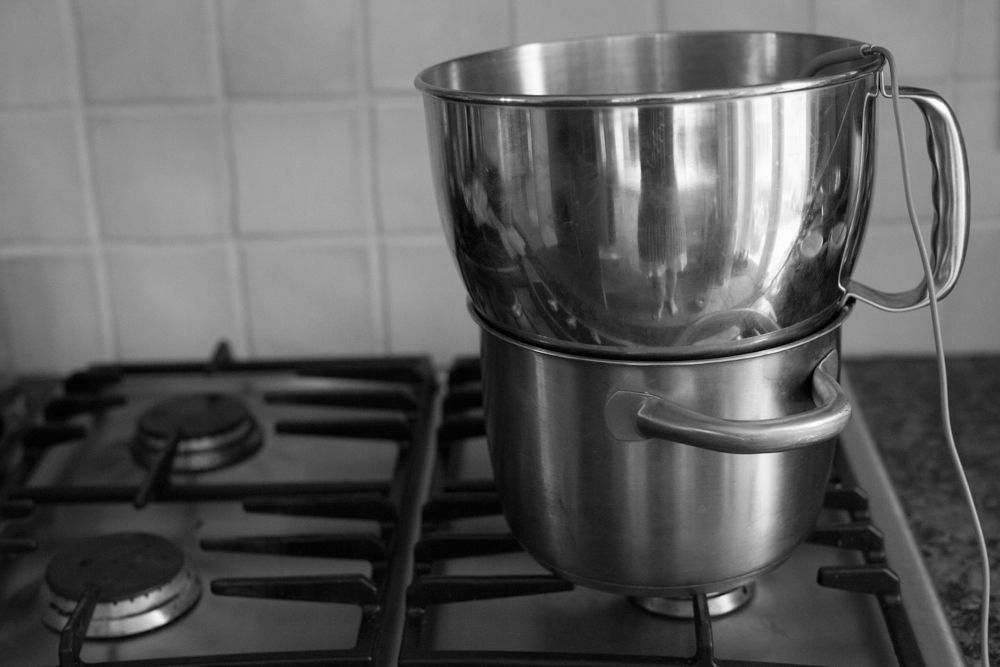
Transfer the bowl to a stand mixer (or use an electric hand whisk) and start whipping on medium-high (I use 8/10 on my mixer).
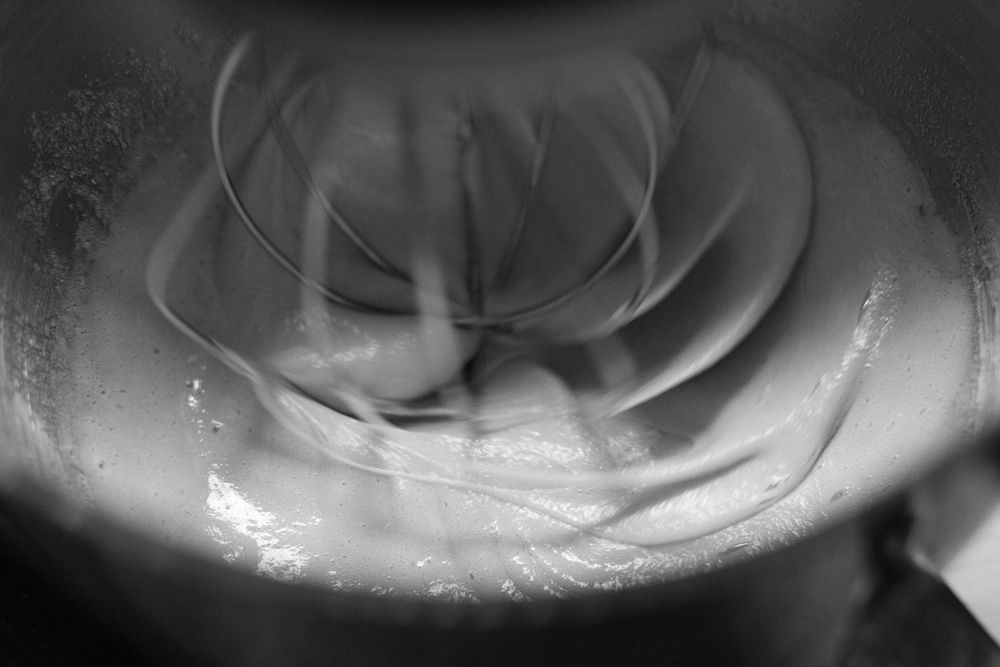
Keep going until the base of the bowl is room temperature to the touch and you have stiff, shiny peaks (see
Part I for more description and photos of the peaks). This can take between 6-10 minutes, partly depending on the size of your batch (this one took 7 minutes).
As you can see at the top, the meringue is very stiff and quite dense compared to the French meringue (this is because of the method and the higher sugar content).
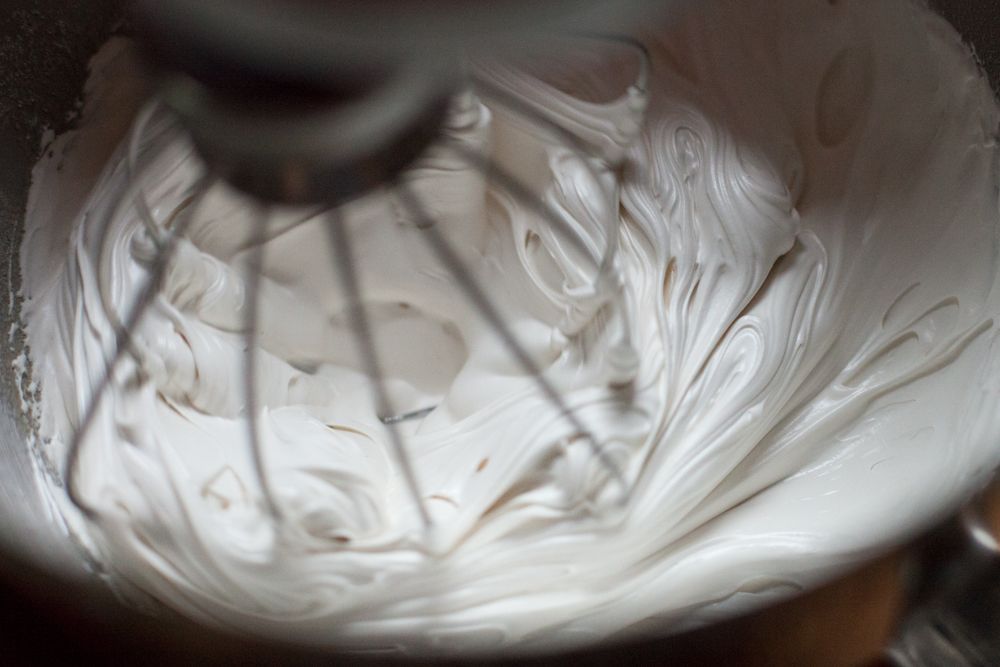
The stiffness, stability and safety of Swiss makes it great for piping onto things and blowtorching them - for instance, I used it for the
Lemon & Brown Sugar Meringue Tartlets and I once used it to pipe a
ruffle cake that I then torched. Unlike French meringue that hasn't been baked, Swiss (and Italian) should hold up for a day or two without separating if it's covered with cling film and kept in the fridge, so it's useful for anything that needs to hold.
There is, of course, the lovely
Brown Sugar, Cinnamon and Hazelnut Meringues. You can also make a Swiss Meringue Buttercream by adding butter, as I did for the
Rose and Pistachio Layer Cake and for the
Beautiful and Damned - it's a brilliant buttercream for layer cakes.
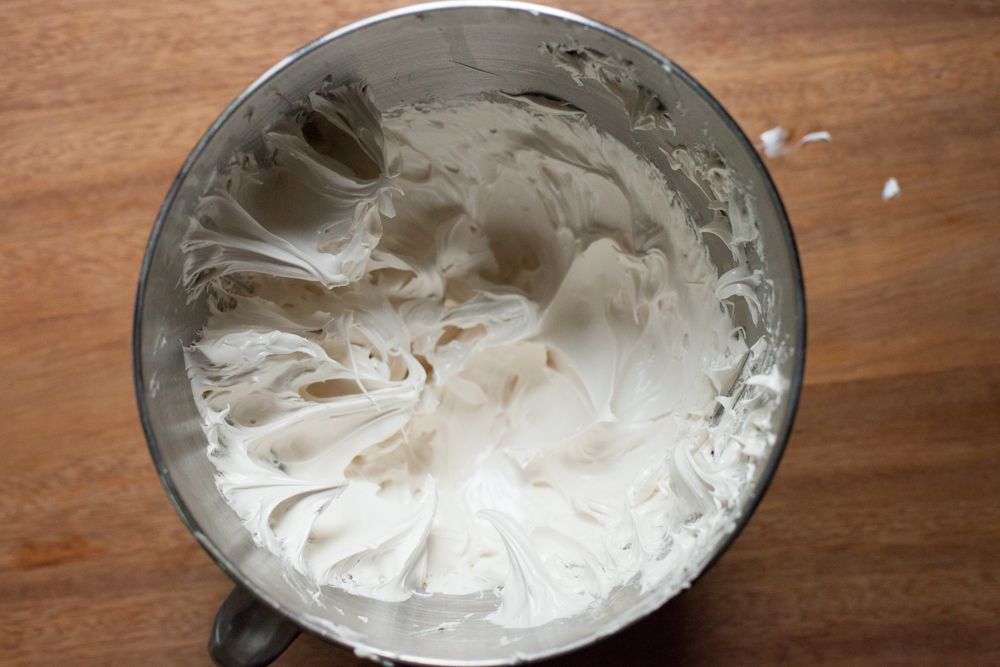

The Italian method creates a cooked meringue by pouring a very hot sugar syrup onto the whisking whites then whisking until cool. While you're heating the syrup to a higher temperature, the whites don't actually reach a high enough temperature to kill off salmonella, so if that's what you're worried about, use Swiss.
You usually see a relatively large amount of sugar to whites for Italian - up to 1 : 2 (whites : sugar). This ratio makes meringue that is sometimes called 'hard' meringue and is the upper limit of the amount of sugar you can add. 'Soft' is sometimes used for the minimum 1 : 1 ratio - as I've noted with French and Swiss, you usually end up using something in the middle.
You also add water to make the syrup. You only need enough water to dissolve the sugar - any more and you'll just have to spend time boiling it off before it comes up to temperature.
For the photos I used 70g egg white, 140g caster sugar and 90ml water.
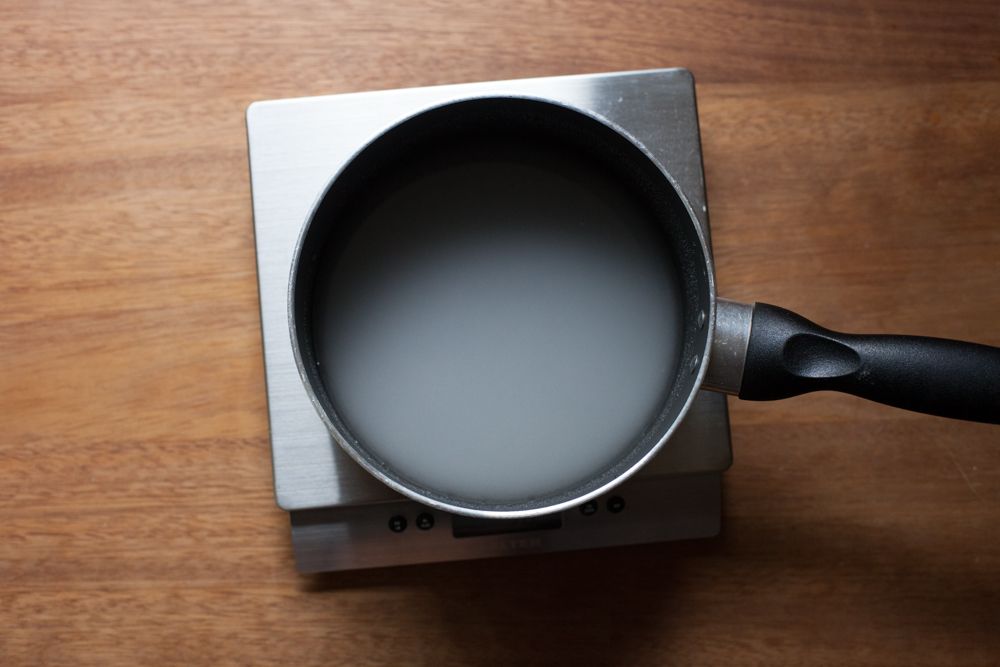
Place your whites in a very clean bowl on a stand mixer with the whisk attached. Don't turn them on yet.
Swirl the sugar and water together in a small pan. Add a thermometer and place over a medium-high heat. If there are sugar crystals on the side of the pan, wash them down with a wet pastry brush.

Once the syrup gets to 105C/220F, start whipping the whites on medium (4 or 6/10). You want them to be a bit stiffer than they are when you start adding the sugar for
French, but not over whipped and grainy - somewhere in between soft and stiff peaks. If they get there before your sugar is ready, turn them right down (the other way to do it is to wait until 116C/240F then whack them on high, but I prefer going slowly).
When the syrup reaches 120C/250F, take it off the heat and immediately pour it down the side of the bowl, keeping the mixer whisking on low (2 or 4/10) as you pour.
Though I've used it
before, here's a video clip showing how to pour the syrup without hitting the whisk (excuse the small slip of hand, a pan with a handle is easier to deal with):
Once you've added the syrup, turn the mixer up to medium-high (I use 8/10) and let it whip. Don't worry if the mixture seems rather soupy, it'll whip up.
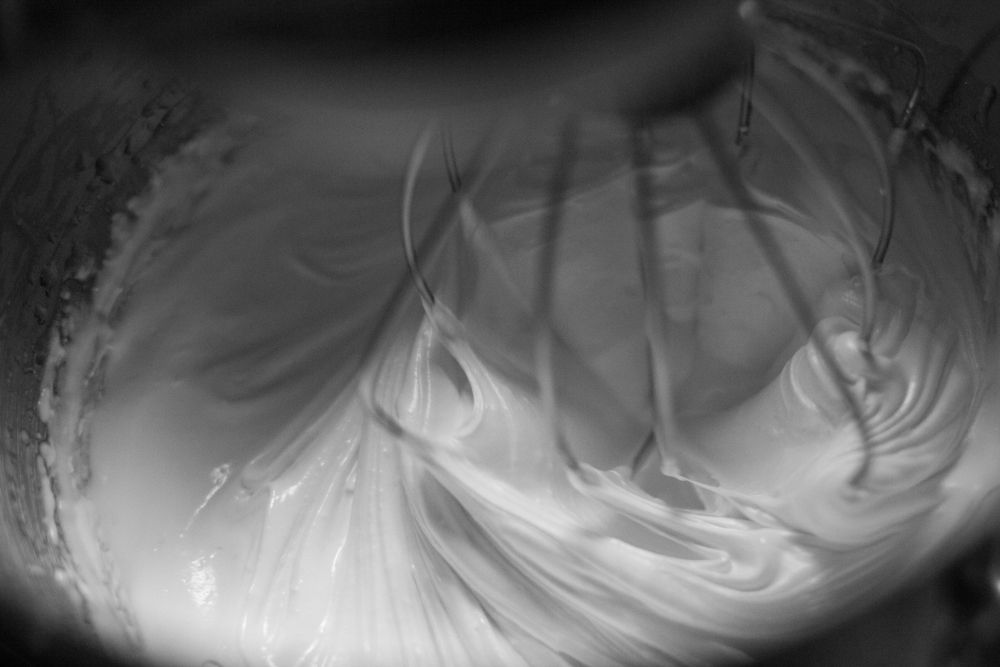
Keep whisking until the base of the bowl feels cool to touch (as below) and the meringue is thick and leaves very stiff peaks - this takes about 6-10 minutes.
I don't use Italian as much as Swiss or French. A few years back when I was interested in
macarons I had the most success with the Italian meringue method. The
French buttercream I make (the video above comes from that post) uses the Italian method but has egg yolks as the base - though you can also make an Italian meringue buttercream just like Swiss meringue buttercream.
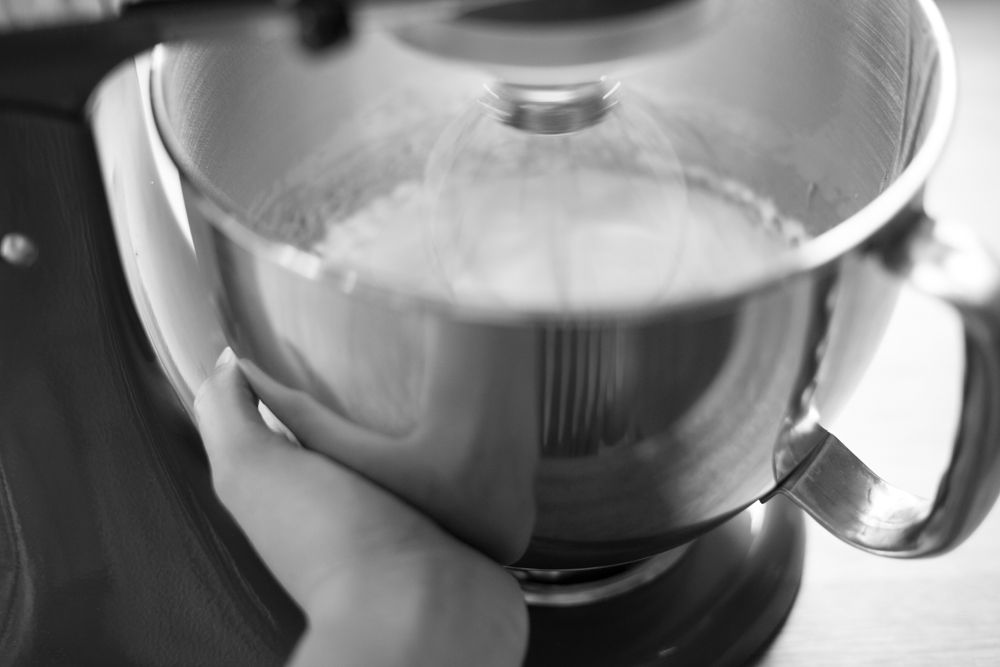 This is the eighth post in my Foundations series - the first half, on the basics and French method of making meringue, is here.
This is the eighth post in my Foundations series - the first half, on the basics and French method of making meringue, is here.
***















